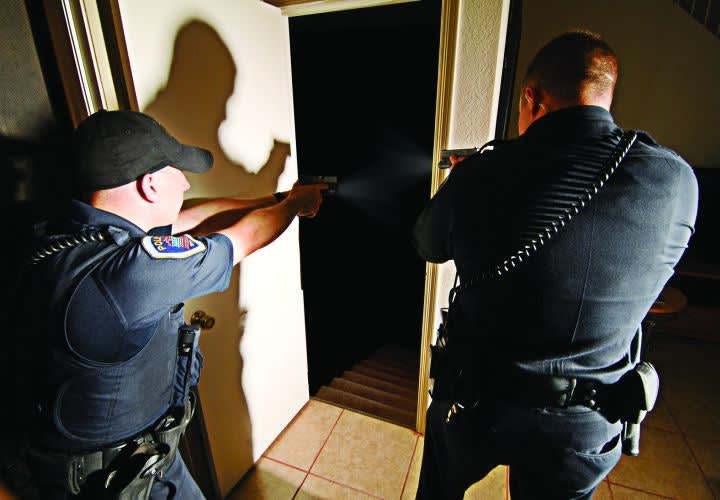Another search tool available to many LE agencies are K-9s, often working in conjunction with SWAT.
"Into the Hearts of Darkness" is must read for all law enforcement officers, including tactical oficers. The article covers the basics, and applies them to the hazards of hidden or confined spaces where suspects often hide. As with any professional, we're only as good as how well we do the basics.
Our basics don't involve skills such as blocking, tackling, passing and receiving. Instead, basics in suspect searches involve a deadly serious "game of hide and seek," where the consequences for mistakes can be dire or deadly.
I'd say every SWAT team trains extensively on suspect searches with special emphasis on the terrain they're dealing with. In urban areas, emphasis would likely be on building searches, while in rural areas, the emphasis would instead be on outdoor/wooded/open areas. However, regardless of terrain type, every SWAT team must be adept at searching buildings and outdoor terrain.
Dean's article focuses on building searches, and more specifically those hidden crevices where suspects prefer to hide from police. As such, I consider "Into the Hearts of Darkness" must-read reference for everyone in law enforcement including SWAT.












